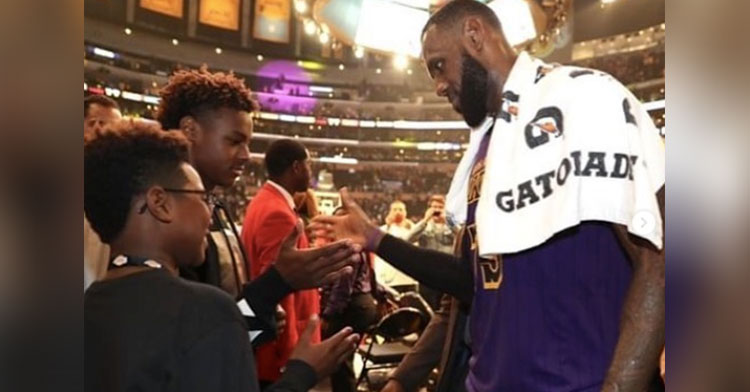An English teacher inspired by LeBron James begins class with a unique handshake for each student. Here are ways you can honor the individual as well.
Not long ago, Barry White Jr., a 5th grade English teacher in Charlotte, North Carolina, became an instant contender for “coolest teacher of the year” award. The creative educator got inspired by LeBron James’s individualized, intricate handshakes for each player on his team.

Instagram
It looks like James is playing an elaborate game of paddy-cake with his friends, energetically moving hands and wrists. White decided to apply the same frenetic friendship play to his entire 5th-grade class (some 40 students).
He and each of his students created highly choreographed handshakes, informed by the unique energy and personality of each student.
White practices them one-on-one with his students during recess, and as you can see in the video below, he has memorized each and every one of the handshakes.
The approach makes students feel appreciated as individuals, energized, and it contributes to an overall sense of bonding.
If you’re not quite ready to turn your conference room into a classroom like this, you can still apply these three lessons:
1. Start by decoding their singular DNA
Leaders that build great partnerships with their employees understand that it’s about relationships, not reporting lines. You influence, teach, and coach through personal power, not position power.
And that starts with trust, which comes from making the time investment to really get to know those who work for (and with) you. Understand their unique imprint and what makes them the way they are — their background, aspirations, and fears.
It’s just like any other relationship in your life — it starts with truly understanding the individual.
2. When it comes to rewards and recognition, personalize so you don’t trivialize
A cookie-cutter approach to rewards and recognition can make recipients feel as unappreciated as if they weren’t getting rewarded or recognized at all.
Find out how each employee likes to be recognized and what makes them feel valued. Start by asking, “How do you like to be recognized?” (For example: formally or informally, in private or public, as an individual or as part of a group, from a boss or peer, verbally or in print.)
You can also ask, “What form do you want your reward to take?” (For example: words of appreciation, increased responsibility and challenges, salary increase, more autonomy, opportunity to showcase good work, time off, promotion, celebration events.)
3. Tailor your coaching to their composition
Think of the three E’s of personalized coaching:
Experience: What’s the person’s experience level? For the more experienced, look to add unique value and perspective versus telling them what they likely already know. Be confirmatory where applicable to reassure their seasoned point of view, not condescending by dictating your own.
For the less experienced, it’s okay to be a bit more directive as they’re coming onboard — but quickly migrate to guiding versus prescribing.
Embodiment: What skills do each of your students embody? What are their styles for getting things done? What are their natural strengths? Help them harness those strengths to achieve their objectives in their own way (not just how you’d do it).
Experience desired: Through trial-and-error and open conversation, you’ll learn to adjust and refine how people like to be coached and engaged in coaching discussions. We all like to receive information and guidance in slightly nuanced ways.
For example, some people like lots of accompanying examples. Others just want the facts. Some like to be given “leads.” Others prefer nothing but agreement to the goal.
The potential iterations and nuances are endless, so ask your team members what’s working for them (or not) in your coaching discussions.
Individual fulfillment is often a group effort — so, join the cause.
This story originally appeared on Inc.com
Want to be happier in just 5 minutes a day? Sign up for Morning Smile and join over 455,000+ people who start each day with good news.



